
Final Advocates Meeting with Commissioner O’Malley
Laura Beth Waller, NOSSCR Chief Strategy Officer
On November 13, 2024, NOSSCR, including Board Member Ashley Sappenfield (pictured) and Non-Profit Member Brian Hogan, joined members of the advocacy community in Woodlawn to meet with Commissioner O’Malley and senior SSA leadership for updates on overpayment reform, the field office appointment model, and a reconsideration proof of concept being tested at DDS in three states.
Overpayment Waivers
We are pleased that a new Request to Waive an Overpayment Form (SSA-632-BK) is in the works. The new form will be nearly all check-box format, greatly reducing the burden on the claimant and their representative to complete lengthy narrative responses and eliminating the need for claimants to provide proof of expenses. We believe that this form meets our advocacy goal and the agency’s objective of eliminating the presumption that the claimant was at fault in generating the overpayment. The tentative release date for the new form is April 2025.
SSA is also working on rewriting waiver policies, which includes reducing more than 70 public-facing POMS sections to about 30 public-facing sections. The target publication date is January 6, 2025, and the agency anticipates detailed staff re-training in conjunction with this release.
These changes would not have been possible without the persistence and dedicated work from the greater advocacy community, including those present at this monthly collaboration session: Community Legal Services of Philadelphia, Legal Aid of North Carolina, Justice in Aging, NADR, AARP, Empire Justice Center, New York Legal Assistance Group, West Tennessee Legal Services, ASSIST Program, Disability Law Center, Legal Council for Health Justice, Bay Area Legal Aid, and National Disability Institute.
Appointment Focused Service Model
SSA is transitioning to an appointment focused service model at field offices. The purpose is to expand the use of appointments in the agency’s community-based field offices to include all field office workloads. 370 offices have already implemented appointment focused service. Expanded implementation is expected in January 2025. SSA will educate the public on the need to schedule appointments, including engaging local communities, placing signs in field offices, and updating agency webpages.
You may have seen a recent Dear Colleague Letter, released the same day as our meeting. This letter clarifies that those who cannot or do not want to make an appointment will not be turned away, particularly vulnerable populations, military personnel, people with terminal illnesses, and others with situations requiring immediate or specialized attention.
We encourage you to reach out to us at nosscr@nosscr.org if you encounter a claimant being turned away for same-day service.
Reconsideration Level Claim Proof of Concept
At Reconsideration in Arkansas, Idaho, and Missouri, claimants and their representatives now have the opportunity to request expedited processing of a Disability Determination Ready Claim (DDRC) upon certification that the claim is fully developed and ready for a decision. The Proof of Concept started on November 18 and is expected to run for three months. A DDRC will go through expedited processing (like claimants with a 100% VA Permanent and Total disability rating or a Terminal Illness).
Indicating that a claim is a DDRC involves filing a Request for Reconsideration along with the new Disability Determination Ready Claim Certification Statement (Form SSA-295), submitting any outstanding medical evidence and an updated SSA-827, consenting to attend a consultative examination, if needed, and certifying that claim is fully developed.
If the examiner realizes something is missing, the claimant or representative will have ten days to complete the file. However, there is no penalty for failing to complete the file—it will simply go into regular, rather than expedited, Reconsideration.
We encourage our members with clients in Arkansas, Idaho, and Missouri to participate and give us feedback—good or bad. We are optimistic that DDRC processing could reduce the extraordinarily long processing times at Reconsideration, getting claimants the benefits they deserve earlier.
O’Malley’s Final Congressional Hearing as Commissioner
On Wednesday, November 20, 2024, NOSSCR attended O’Malley’s final congressional hearing as Commissioner of Social Security. The Commissioner testified before the House Committee on Appropriations’ subcommittee on Labor, Health and Human Services, Education, and Related Agencies (the Commissioner made sure to point out the absurdity that SSA, one of the largest federal agencies, is relegated to “related agencies” without even being named).
During his testimony, the Commissioner once again emphasized the necessity of proper federal funding in order to effectuate meaningful changes within the agency. O’Malley warned that without adequate IT modernization funding, there exists “a looming problem on the horizon of antiquated IT systems totally breaking down or being shut down by bad actors.” The Commissioner also noted that the agency “would like to put more lines of service online,” but cannot do so without money to support IT improvements.
As has been the norm under Commissioner O’Malley, he adeptly navigated questions from both sides of the aisle with humor and grace, while providing genuine data-backed answers to all inquiries. When questioned about why staff depart the agency, the Commissioner emphasized to the subcommittee that “the biggest driver to the demoralization of this agency is their sense that none of you care what they do. And they see their workloads growing.” Later, while defending the agency’s telework policy, the Commissioner provided some levity by showcasing enlarged photos of the SSA Headquarters’ parking lot, filled to the brim with cars (the Commissioner later signed this photo and gifted it our very own David Camp!).
The Commissioner also addressed the agency’s ruthless focus on SSI recipients, noting that “one of the areas where we really are forced to make the employees and the recipients, some of our poorest fellow citizens, jump through hoops, stand on their head, gargle peanut butter, whistle the Battle Hymn of the Republic, is on SSI. The millions we spend trying to claw back nickels out of poor people’s pockets is appalling. And often people say, ‘Well, you need to simplify SSI.’ Congress needs to simplify SSI.”
At NOSSCR we are grateful for the Commissioner’s service to the agency. From day one, his willingness to actively participate in conversations with NOSSCR and others in the advocacy community was unprecedented. O’Malley has been laser-focused on the data, which resulted in the implementation of meaningful improvements throughout Social Security’s programs. We appreciate his pragmatic leadership, the positive culture shift of accountability that he fostered within the agency, the life-changing policies that he instituted for millions of Americans, and his passionate advocacy on the Hill.
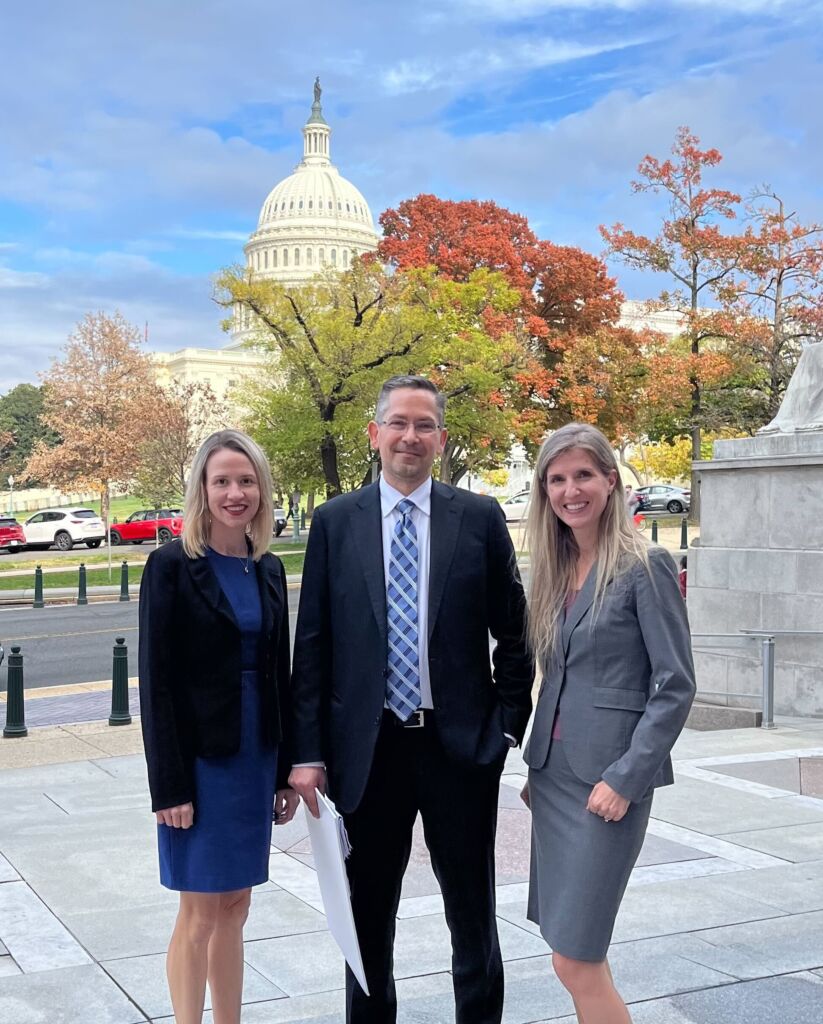
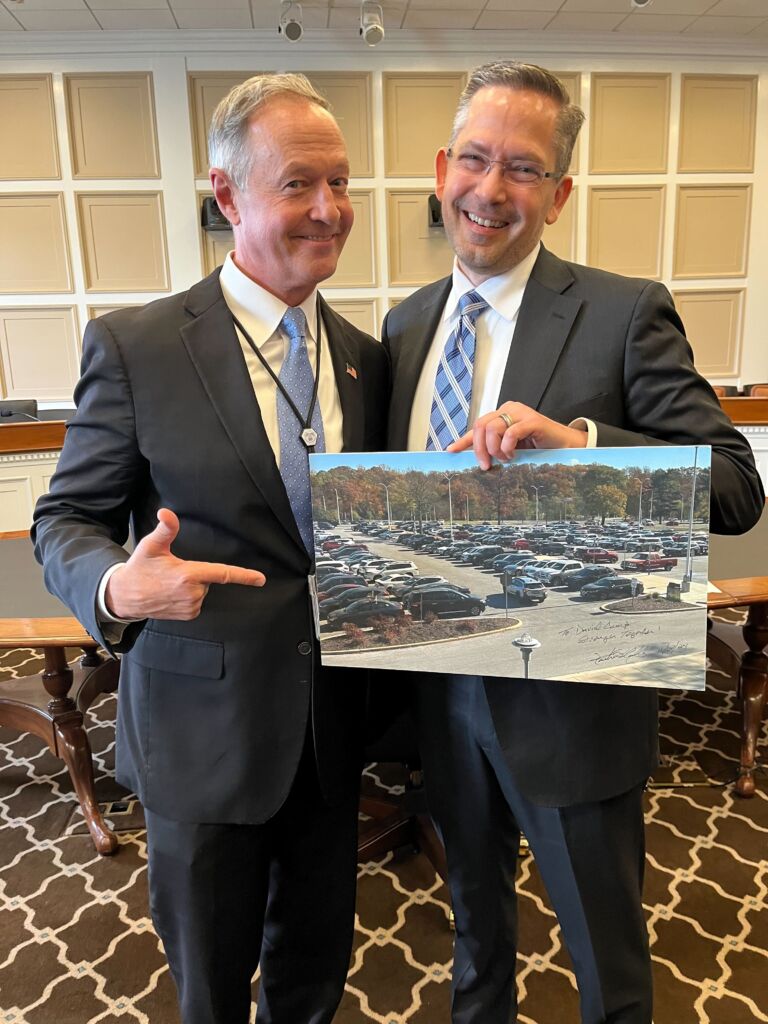
You can watch the hearing in full here.
You can download Commissioner O’Malley’s opening statement here.
Dispatches from Camp: Updates from the CEO
David Camp, NOSSCR CEO
Transitions
Obviously, we’re all working through the consequences of the election. The Presidential transition has produced the early departure of Commissioner O’Malley, who will officially resign November 29th to seek a leadership role with the DNC.
We’re proud of the accomplishments resulting from our close collaboration with Commissioner O’Malley and his team in just 11 months. The day after he resigns, the fee agreement cap will increase to the maximum allowed by statute, followed by annual COLA adjustments thereafter. We’ve announced two dozen other improvements this year—on everything from past relevant work to access to ERE and AARPS expansions. Many more are in the pipeline—sometimes slowed due to policy reviews but more often because antiquated systems must be adjusted. These include the remainder of our “punch list” items NOSSCR asked of Commissioner O’Malley last Christmas—including a version of an “enterprise contact” for more efficient calls placed by representatives to SSA.
NOSSCR isn’t sitting back and watching this transition process. I am in close contact with the transition team, key officials at SSA, and influential Senators. A full Commissioner six-year term is open for a Senate-confirmed nominee in 2025. As you may have been tracking for the last few years, NOSSCR isn’t partisan, and our connections include both Democrats and Republicans. This is a good time to mention the importance of our NOSSCR PAC, which expands our capacity to educate and connect. This transition is unprecedented for the lack of traditional structure. There is a transition team, and many names (including mine) are currently floated for Commissioner. Ultimately, we expect this to be a good example of the need for a President to work with the Senate—a process unlikely to be rushed. Social Security isn’t called the “third rail of politics” because our community is weak. We always protect and enhance the disability program and SSA’s functions, and NOSSCR has extremely strong allies in that work. While it is too early to know—and certainly Martin O’Malley is hard to replace—I’m confident SSA will have a new Commissioner that continues updates to policy, operations, and budget controls.
Next up is an Acting Commissioner announcement. With the Deputy Commissioner position vacant, the ACOSS will be named by President Biden. We’ll let you know immediately.
Medical records
We’re progressing well with our multi-prong attack on the medical records problem—both as to costs and the need to obtain them at all. Our approach to encourage collaboration between SSA and HHS as to existing “record blocking” regulations is temporarily paused during the transition for both practical and political reasons. Many senior staff at both agencies are transitioning out of government, and it’s common for decisions made November-January in a Presidential transition to be reflexively reversed in February.
You may have seen our social media and press release announcements recently, including NOSSCR’s heat map of state laws barring (green) or allowing (red) costs. Behind the scenes, NOSSCR is already working with several state legislatures on state-law improvements.
We’re now partnered in this advocacy with three of the strongest forces on this topic—SSA, Epic, and Microsoft. We agree with Epic’s work toward a “public benefits use case” for “interoperability” and have been collaborating with SSA’s expansion of HIT MER providers from among Epic’s customers. To learn more about the issues and the coming Epic-supported standard called “TEFCA” check here and here.
As always, it is a privilege to serve as your professional association’s CEO. Thank you for your membership.

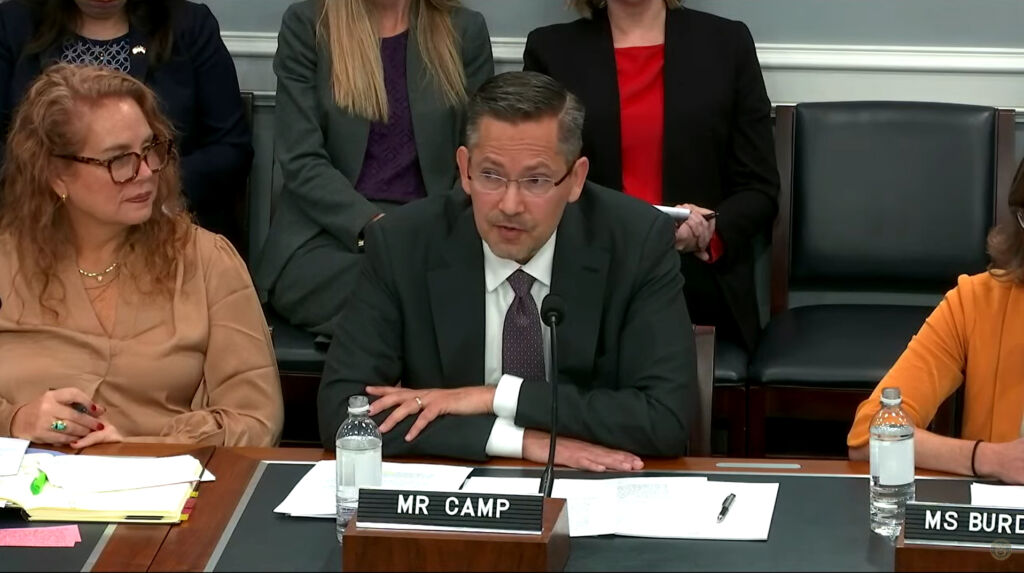


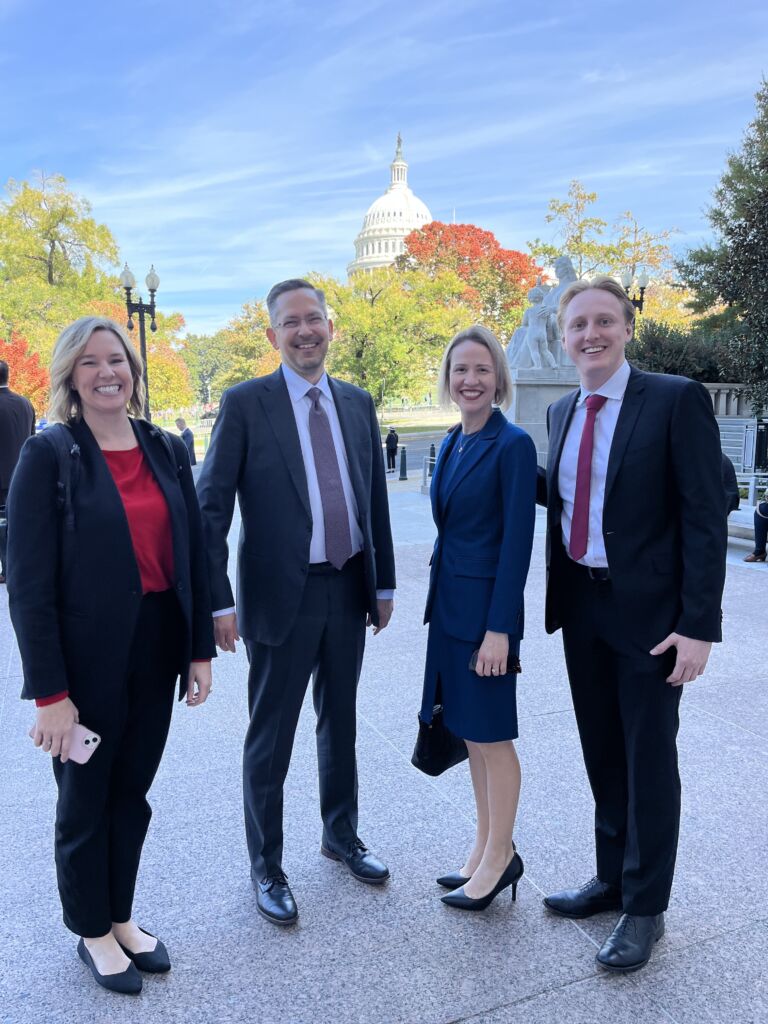
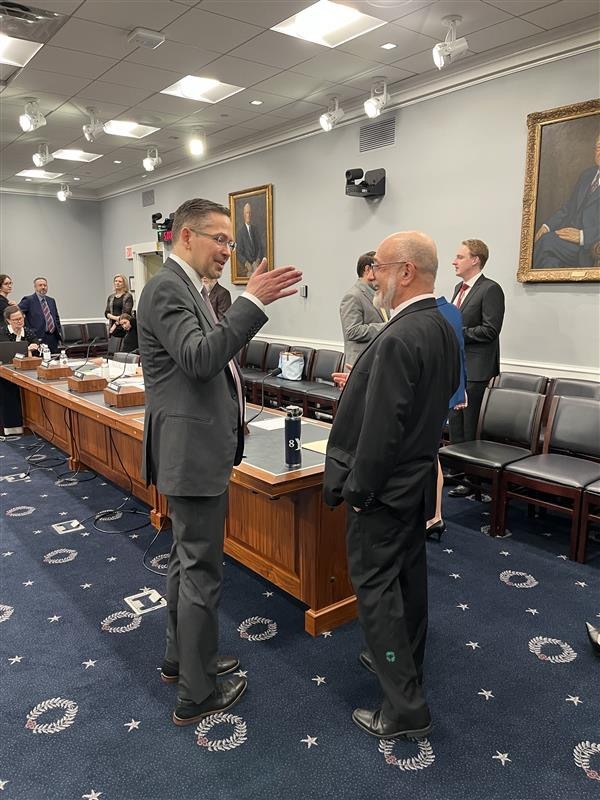

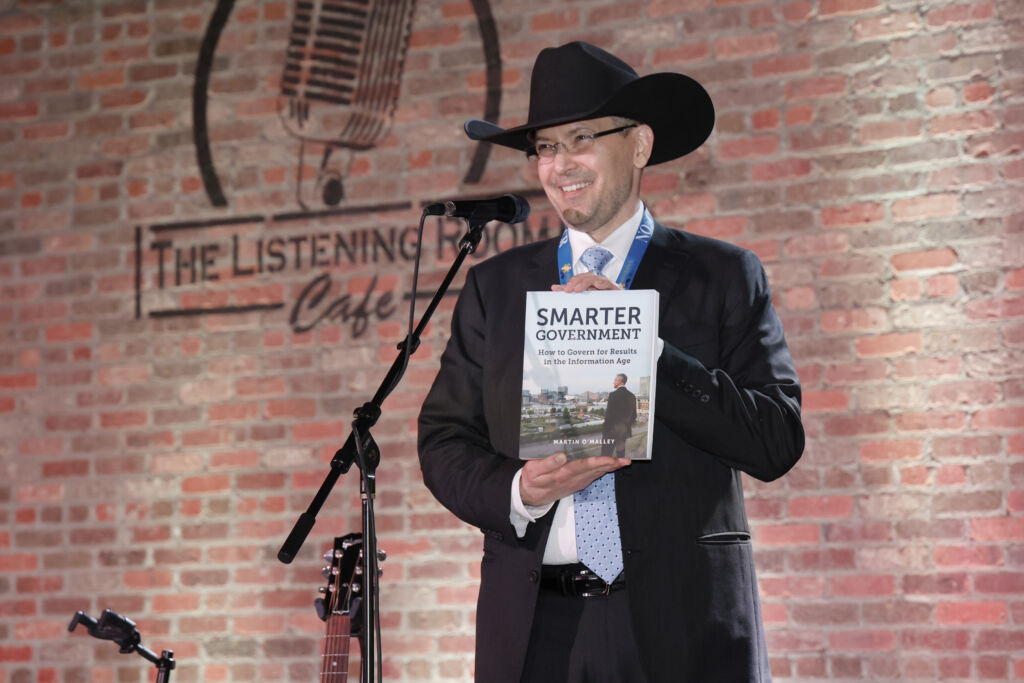

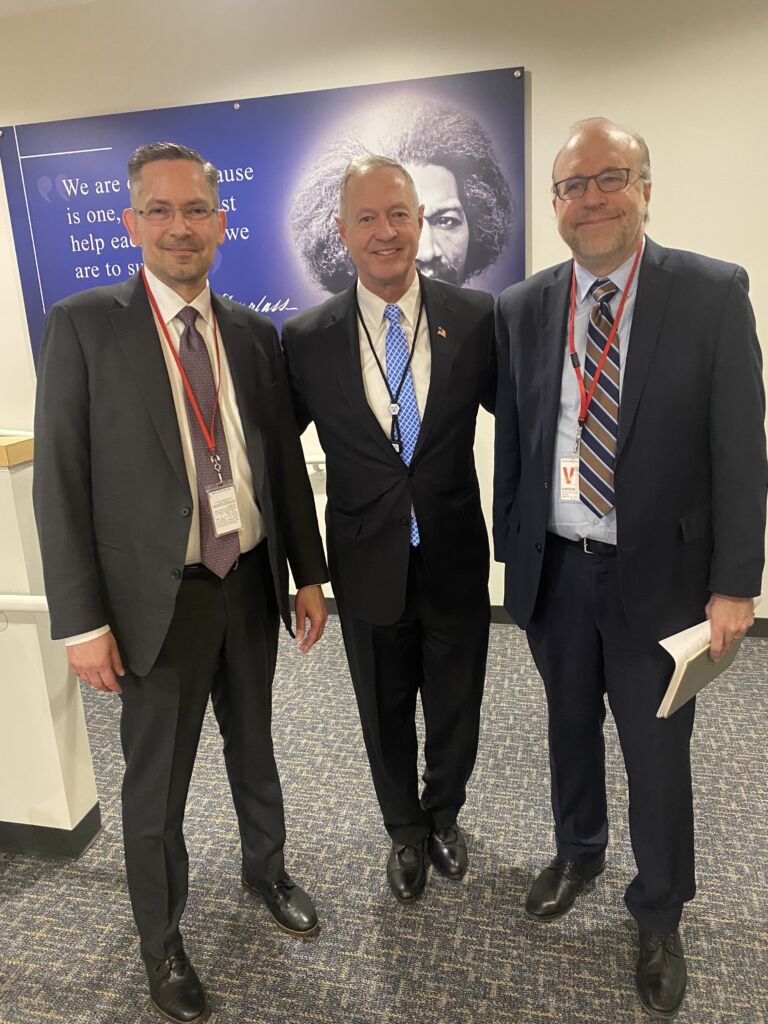
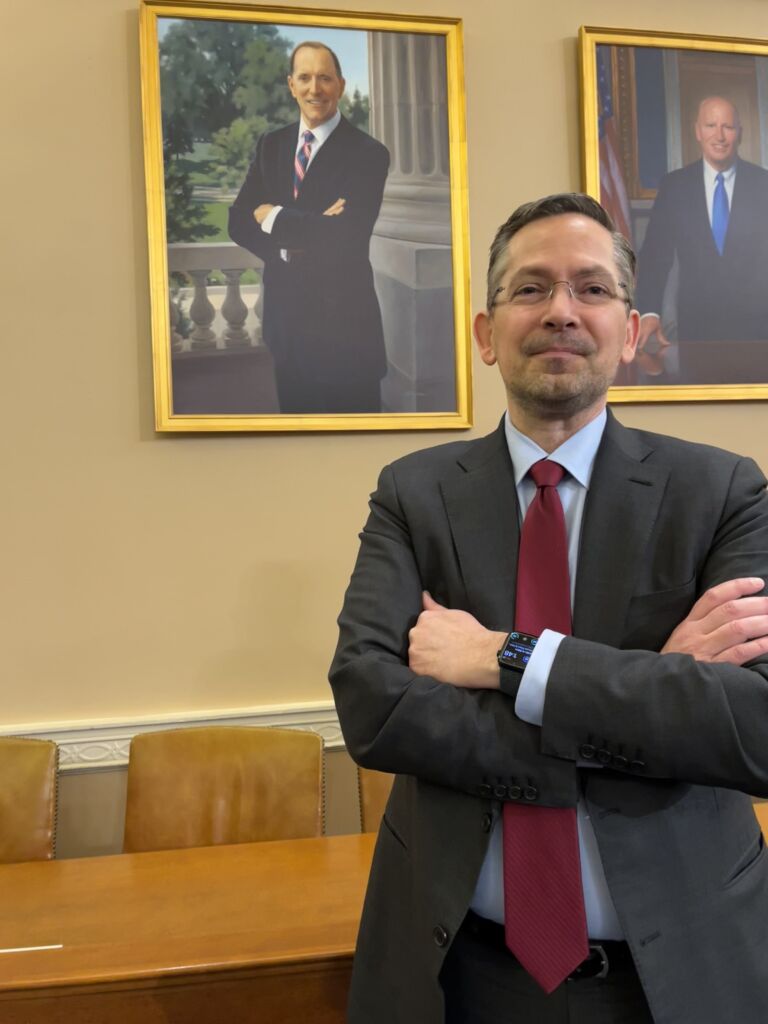
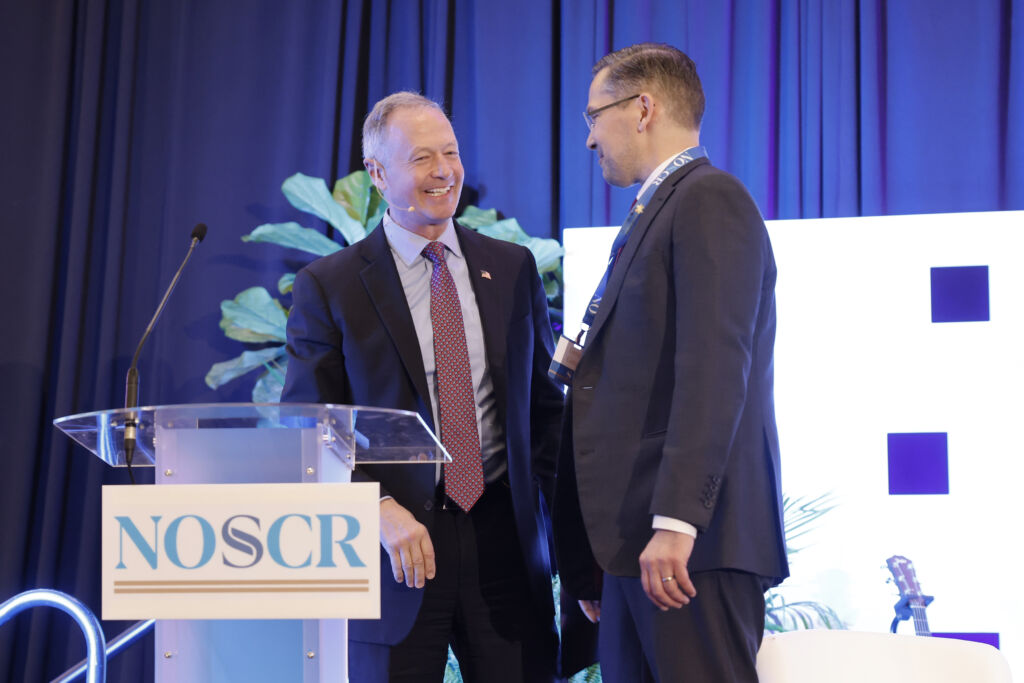
President’s Corner
Rick Fleming, NOSSCR President
With the outcome of the election settled, NOSSCR is ready for the work ahead.
For 45 years NOSSCR has worked in partnership with all constituencies, regardless of the political landscape. As disability advocates, we have a shared commitment to advancing policies that support the Social Security disability and SSI communities. Both NOSSCR and the NOSSCR PAC will proactively engage with the new Administration and Congress to protect and strengthen Social Security. Our commitment to you, our members, is to provide you with the resources, training and community you need in order to effectively represent your clients.
As a NOSSCR member you are not alone. You are one of thousands marching in the same direction. Our fight is your fight. Join us in ensuring that the future remains bright.
Would you like to roll up your sleeves and help?
Help can take many forms. One way you can help is by donating to the NOSSCR PAC so that we have the resources to support members of Congress whose committee assignments place them in positions affecting the interests of our clients and our practice area. The NOSSCR PAC works to educate, inform, and serve as a resource for those on the Hill who will shape the future of Social Security. Being at the table ensures that our interests are protected, and the facts are communicated correctly. But being at the table comes with a cost. Please support the NOSSCR PAC. NOSSCR members may donate from personal funds here.
Care to help in other ways? NOSSCR would love to help prepare you for a Hill visit. Speaking with your Senator or member of Congress is one of the most helpful things you, as members, can do. Contact us at nosscr@nosscr.org and let us begin strategizing your Hill visit.
Can’t do either of those? Consider increasing your membership from a regular membership to a sustaining membership, or gift a NOSSCR membership this season to an associate or colleague.
Prefer to help other members? How about giving to the Rudolph Patterson Scholarship fund so that others can attend a conference? Has NOSSCR helped your practice? Consider investing in other members. Give here.
As the weather changes and gift giving season begins, consider a purchase from the NOSSCR store. Your purchase supports NOSSCR’s mission and makes you look (and feel) great!
Looking for good news? November means an increase to the Fee Cap!
The maximum fee will increase to $9,200 on cases decided after November 30, 2024, assuming proper escalator language was used in the fee agreement on file in the case. If you have questions about updating your fee agreement please review this article in last month’s Forum.
And finally, please mark your calendars for the Virtual Conference December 10th-11th. If you haven’t already registered, do so here.
Contributions to the National Organization of Social Security Claimants’ Representatives PAC (NOSSCR PAC) are not tax-deductible as a charitable contribution for federal income tax purposes. Contributions to NOSSCR PAC will be used to support federal and state candidates, political parties, and other political committees. Contributions are strictly voluntary. You may refuse to contribute without reprisal. Any proposed contribution level is merely a suggestion, and you are free to contribute more or less than suggested. You will not benefit or be disadvantaged by reason of the amount of your contribution or a decision not to contribute. Federal law requires NOSSCR PAC to use its best efforts to collect and report the name, mailing address, occupation and employer of persons whose contributions exceed $200 in a calendar year. You must be a U.S. citizen or lawfully admitted for permanent residence in the U.S. to contribute.
Legislative Spotlight
Betsy Rosecan, NOSSCR Government Relations Director
NOSSCR is keeping an eye on Congress for developments with H.R. 82, the Social Security Fairness Act. This legislation seeks to eliminate the government pension offset (GPO) and windfall elimination provision (WEP), which reduce Social Security benefits for those who receive other pensions from state or local governments. Emblematic of the dysfunction with which Congress has operated as of late, this bill is inching its way through Congress on an unconventional path.
In the last few months, Rep. Garret Graves (R-LA) and Rep. Abigail Spanberger (D-VA) gathered the requisite signatures (218) to bring H.R. 82 to the floor through a discharge petition that would allow them to bypass regular House procedure. Specifically, a discharge petition allows a bill to be considered by the full House without first being passed by the committee to which the bill was initially referred. In this case, it was the House Committee on Ways and Means. The bill is supported by 330 cosponsors (210 Democrats and 120 Republicans) and should have passed easily.
However, the legislation was blocked by the House Freedom Caucus on election night. To stop the plan developed by Graves and Spanberger, Rep. Bob Good (R-VA) and Rep. Andy Harris (R-MD), Chair of the House Freedom Caucus, went to the House floor to use a parliamentary procedure that would postpone consideration of the bill. Good asked Harris, who was presiding over the House as Chair at the time, for unanimous consent to “lay the bill upon the table,” and Harris approved the motion. When Good made this unanimous consent request, there were not any other Members present to object to the request. As such, under House rules, this move effectively killed the bill for the time being.
However, when Good and Harris took these steps, the House was operating in pro forma session while Members of the House were scattered about the country awaiting election results. Legislative activity almost never occurs during pro forma session, so Good and Harris broke protocol in a significant way with their unorthodox actions, and it appears they did not have the blessing of Speaker Johnson to do so. According to an article in The Hill, “House GOP leadership had already prepared a way to bring up the bill under suspension of the rules, a different process that requires two-thirds support for approval but is faster than the discharge petition requirements.”
Good agreed to capitulate to GOP leadership’s request that he correct his original action in exchange for the opportunity to allow the House to vote on a more conservative measure to address the WEP issue. This legislation, the Equal Treatment of Public Servants Act of 2023 (H.R. 5342), would phase in a new formula for determining benefits under the WEP.
On November 12, 2024, Good went to the House floor to ask that his earlier action on H.R. 82 be reversed by asking for unanimous consent that the order of the House on Nov. 5, 2024, regarding that legislation, be vacated. His request was granted. The same day, H.R. 82 was brought to the floor under suspension of the rules, meaning amendments could not be offered and a two-thirds majority was required to pass the bill. The bill passed by a vote of 327 to 75. The House also voted on H.R. 5342 under suspension of the rules, but it did not garner the two-thirds majority necessary to pass. The vote was 175 to 225.
H.R. 82 now moves to the Senate, where its future is uncertain. While the Senate’s companion bill (S.597) has 62 cosponsors, which would be enough to overcome a filibuster, the short timeframe available for the Senate to consider the legislation prior to the end of the lame duck session makes passage a longshot. If the Senate does not act, the legislation will have to be reintroduced in the 119th Congress, and the process will begin anew.
NOSSCR will continue to monitor action on this legislation.
Bill Details:
SECTION 1. Short title.
This Act may be cited as the “Social Security Fairness Act of 2023”.
SEC. 2. Repeal of government pension offset provision.
(a) In general.—Section 202(k) of the Social Security Act (42 U.S.C. 402(k)) is amended by striking paragraph (5).
(b) Conforming amendments.—
(1) Section 202(b)(2) of the Social Security Act (42 U.S.C. 402(b)(2)) is amended by striking “subsections (k)(5) and (q)” and inserting “subsection (q)”.
(2) Section 202(c)(2) of such Act (42 U.S.C. 402(c)(2)) is amended by striking “subsections (k)(5) and (q)” and inserting “subsection (q)”.
(3) Section 202(e)(2)(A) of such Act (42 U.S.C. 402(e)(2)(A)) is amended by striking “subsection (k)(5), subsection (q),” and inserting “subsection (q)”.
(4) Section 202(f)(2)(A) of such Act (42 U.S.C. 402(f)(2)(A)) is amended by striking “subsection (k)(5), subsection (q)” and inserting “subsection (q)”.
SEC. 3. Repeal of windfall elimination provisions.
(a) In general.—Section 215 of the Social Security Act (42 U.S.C. 415) is amended—
(1) in subsection (a), by striking paragraph (7);
(2) in subsection (d), by striking paragraph (3); and
(3) in subsection (f), by striking paragraph (9).
(b) Conforming amendments.—Subsections (e)(2) and (f)(2) of section 202 of such Act (42 U.S.C. 402) are each amended by striking “section 215(f)(5), 215(f)(6), or 215(f)(9)(B)” in subparagraphs (C) and (D)(i) and inserting “paragraph (5) or (6) of section 215(f)”.
SEC. 4. Effective date.
The amendments made by this Act shall apply with respect to monthly insurance benefits payable under title II of the Social Security Act for months after December 2023. Notwithstanding section 215(f) of the Social Security Act, the Commissioner of Social Security shall adjust primary insurance amounts to the extent necessary to take into account the amendments made by section 3.
Passed the House of Representatives November 12, 2024.
LAST CHANCE! Register NOW for Our Dec. 10-11 Virtual Conference
We can’t wait to share two days of jam-packed continuing education sessions with you in December—all from the comfort of your home or office!
Registration is NOW OPEN for our December 10 and 11 Virtual Conference. Register today to secure your spot!
Our sessions will include a panel on fees, a session on how automation can help your practice, a look at the importance of work history reports, a primer on the importance of ERISA files for your disability case, and many more!
And of course, don’t miss the chance to hear directly from SSA Senior Staff about the latest activities at the agency.
Check out the schedule below—all times Eastern—and register today!
Interested in being one of our Virtual Conference Sponsors? We’d love to have you! Visit our site or contact us at nosscr@nosscr.org to learn more.
Just Ask Jennifer: Entities, AARPS, FAs, HIT MER
Jennifer Cronenberg, NOSSCR Senior Counsel and Director of Legal Information
We know there have been a lot of technical changes lately — new rules taking effect, new systems being introduced, and, importantly, a new fee cap that will finally be implemented! Herein I try to simplify these changes and answer some commonly asked questions. Think of this as your cheat sheet for all the recent developments.
Entities
When will Phase 2 of the new Entities rules begin?
- December 9, 2024
Where can I review these new Entities rules?
I missed Phase 1 — what was I supposed to do?
- Make sure that you and everyone in your firm who plans to be named on an SSA-1696 has a RepID number (which is provided after a Form SSA-1699 is completed and processed).
- Complete an updated Form SSA-1694 for your firm, naming someone (who has a RepID) as the Point of Contact (POC) for the firm.
What happens in Phase 2?
- SSA will be releasing an updated Form SSA-1696 on December 9, 2024 that should be utilized for all cases going forward.
Can I view the updated Form SSA-1696 now?
- Yes! You can view the form that SSA submitted to OMB for approval by following this link: View Information Collection Request (ICR) Package and then clicking on the “View Information Collection List” link (found at the bottom of the box at the top of the page).
- While this form cannot be utilized until it is released on December 9th, reviewing it now should provide some clarity on the process.
Can you explain exactly what should happen under this new entity process?
- Yes. If you (and your RepID number) are listed on a 1696, but you don’t want to be personally paid on a case (because you are a salaried employee working for an entity and the money from that case will go the firm), then you can now assign your fee from that case (the one where you are listed on the 1696) to the entity.
- Basically, as long as your 1699 properly associates you with the entity, and the firm has an updated 1694 on file, the new 1696 will communicate directly with the firm’s 1694 (skipping over the payment information listed on the representative’s personal 1699), thereby paying the entity directly.
- This should significantly reduce the number of fee petitions that are necessary where more than one representative (within the same entity) were listed on a case.
Once the new SSA-1696 is released, do I need to complete updated SSA-1696s for all of my pending cases?
- If you want fees to be assigned to the entity via this new process, then yes, you will need a new SSA-1696 on each case.
- HOWEVER, if you do not want to submit new 1696s for all of your pending cases, THAT IS OK! You do not have to! You will simply be paid as the individual representative via the information on your SSA-1699, as has always happened previously.
What if I have a SSA-1696 on file for a pending case that does NOT have a RepID on it (because I did not previously have one), do I have to submit new 1696s for all of my cases once I receive my RepID? [This question mainly applies to pro-bono-only representatives].
- No. The RepID is only required for new appointments on or after 9/30/2024.
Form SSA-1699 says that I must be the owner or co-owner of the bank account in both Sections 4 and 5. I do not co-own my entity’s bank account, and I do not want to list my personal banking information on this form. But direct deposit is required for assignment to the entity. If I select “check” as my payment option in both Sections 4 and 5 of my SSA-1699, will I still be able to assign my fee to the entity for direct deposit?
- YES! If direct payment is successfully assigned to an entity on the new form SSA-1696, the payment will be made by electronic funds transfer to the bank account provided by the entity on form SSA-1694.
- The information provided on the individual rep’s 1699 will only be used if there is no assignment or if an assignment cannot be honored, in which case, payment would revert to the information provided on the 1699 (in this example, a mailed check).
AARPS
How do I access the new Appeals and Appointed Representative Processing Services (AARPS)?
- Navigate to SSA’s Representative Homepage then scroll down and click on Appeals and Appointed Representative Processing Services (AARPS) online portal.
How do I login?
- You must first create your own personal account on Login.gov or ID.me. Both of these platforms require an authentication process that must be completed before you can access AARPS.
What should I do if I have trouble logging in?
- Check the URL of the page where you hit the snag.
- If the URL includes “ssa.gov,” then you should call SSA’s 800# at 1-800-772-1213 and select the option for login assistance.
- If the URL includes “login.gov” or “id.me,” then you should reach out to the Login.gov contact center (Contact us | Login.gov) or the ID.me contact center (ID.me Help Center) for assistance.
Who should create an AARPS account?
- Anyone who has executed a 1696 under their name.
What information am I able to view?
- A 3-year history of appointments and fee payments.
Can my staff access my AARPS account?
- Not yet. Because of the login requirements of Login.gov and ID.me, we recommend that you do NOT share your login information with your staff, as they could use these same credentials on other platforms to access personal data about you.
- We have requested that the agency add a staff login feature that utilizes different credentials, and we will update you as soon as this feature becomes available.
- However, the data within AARPS is easily downloadable on an excel spreadsheet. So for now, we recommend that you personally download the selected data and distribute it to your staff thereafter.
Is AARPS going to replace the ERE?
- For now, no. The two systems will operate simultaneously.
- As a reminder, SSA wanted to bury this system (potentially for years) until it had increased functionality, but we requested that they grant us access to the data ASAP while they continue to make improvements. Eventually, SSA’s goal is to have one functioning representative portal that gives us all of the needed access to our case information, but their IT funding is drastically insufficient. So in the meantime, while imperfect, the data provided within AARPS does add value, and we fought to give you access to this data as soon as possible lest SSA bury this system for several more years.
Fee Agreements
When does the new fee cap take effect?
- November 30, 2024!
When will an updated Form SSA-1693 (SSA’s fee agreement form) become available?
- December 9, 2024
Can I view the language what will be on the updated Form SSA-1693 now?
- Yes! While SSA will not have this form approved for use until December 9, 2024, you can view the version that SSA submitted for approval to OMB by clicking on this link: View Information Collection Request (ICR) Package and selecting “View Information Collection List” (located at the very bottom of the box at the top of the page).
Do you have any advice for language to use if I choose to write my own fee agreement?
- Yes – two prior Forum articles speak to this:
HIT MER
Where can I find a list of participating HIT MER partners?
- Navigate to this page: https://www.ssa.gov/hit/partners.html
- Click on Full List of Health IT Partners
Can I ask OHO to obtain VA or DoD records via HIT MER?
- DoD records = NO. This is a recent change. DoD stopped participating in HIT MER.
- VA records = YES. But there must be an electronic 827, submitted at the hearing level, and not more than 9 months ago, on the ERE.
What is an electronic 827 for VA records?
- The process is outlined in HALLEX I-2-5-14.
- If an electronic 827 was not submitted when the hearing was filed (or it is more than 9 months old), representatives should call OHO with the claimant on the line. As long as the claimant has previously viewed and already understands the 827 form, OHO staff can take the claimant’s verbal attestation and quickly create an electronic 827. Refer OHO staff to the above HALLEX if there is any confusion.
What evidence tagging option should I select when uploading HIT MER requests?
- Select “correspondence regarding efforts to obtain evidence.”
When should I submit a HIT MER request?
- As soon as possible, but at least 15 days prior to the hearing date.
What should I do if OHO or an ALJ refuses to process my HIT MER request?
- If it is a staff member within OHO, refer them to their Representative’s Guide for Requesting Health Information Technology Medical Evidence of Record (HIT MER) that can be found on their website (https://www.ssa.gov/appeals/rep_info.html).
- If that does not work, try to escalate to a supervisor.
- If that does not work (or if the refusal comes directly from the ALJ), report the details of the refusal to me — jennifer.cronenberg@nosscr.org.
Is there a form I can use for my HIT MER request?
- Yes, NOSSCR created an optional form (downloadable below) for your convenience (but any writing with the required information will suffice – see the above instructions for more detail).
NOSSCR Stands Firm for Broad Relief in Nationwide Class Action
Tom Krause, NOSSCR Litigation Director
Class actions have long played a critical role in safeguarding and expanding the rights of Social Security claimants. In a recent case, LNP v. O’Malley, SSA seeks to curtail access to this vital form of relief. NOSSCR has joined the fight, filing an amicus brief to support the plaintiff and advocating for broad-based policy reforms through class action litigation.
The Case: Challenging Unlawful Benefit Reductions
The case, LNP v. O’Malley,[1] involves a challenge to SSA’s application of the “family maximum” formula under 42 U.S.C. § 403. The plaintiff, representing himself and others similarly situated, seeks to certify a nationwide class dating back to 1999. He contends SSA improperly calculated child insurance benefits using theoretical figures like the primary insurance amount (PIA) instead of actual payment amounts, such as the reduced Retirement Insurance Benefit (RIB).[2] This practice, he argues, led to unjust benefit reductions for his children and violated both statutory and regulatory mandates.
On November 15, 2024, Judge Michael S. Nachmanoff held a hearing in Alexandria, Virginia, to consider two pivotal motions: the plaintiff’s motion for class certification and SSA’s motion to dismiss. Judge Nachmanoff granted NOSSCR permission to file an amicus brief and provide oral arguments supporting the plaintiff.
NOSSCR’s Advocacy: The Power of Class Actions
In its brief, NOSSCR highlighted the historical significance of class actions in achieving justice for Social Security claimants. Landmark cases such as Califano v. Yamasaki,[3] City of New York v. Heckler,[4] and Sullivan v. Zebley,[5] illustrate how class actions have shaped SSA policies, ensured procedural fairness, and expanded protections for claimants nationwide. These cases have collectively led to policy changes that continue to benefit hundreds of thousands of Social Security recipients.
NOSSCR underscored the Social Security Act’s broad and remedial nature, arguing that its provisions are intended to favor beneficiaries. The brief critiqued SSA’s restrictive position on class relief and emphasized the impracticality of requiring individual joinder for large groups of claimants—particularly given the widespread impact of SSA policies.
Key Legal Arguments
NOSSCR’s brief focused on three key points:
- Impracticality of Joinder: Drawing on Fed. R. Civ. P. 23(a)(1), NOSSCR argued that the size and geographic dispersion of the proposed class—potentially involving thousands of individuals—make joinder impractical, reinforcing the need for class certification.
- Equitable Tolling: The brief highlighted SSA’s reliance on secret policies and unpublished manuals (POMS), which misled claimants and warranted waivers of administrative exhaustion requirements.
- Venue and Jurisdiction: NOSSCR argued that under 42 U.S.C. § 405(g), class certification does not require every class member to reside in the district where the case is filed. Courts have consistently allowed nationwide class actions where only the named plaintiff resides in the filing district.
Awaiting a Decision
Judge Nachmanoff took both motions under advisement and provided no timeline for a decision. The outcome of this case could significantly impact the future of class action litigation for Social Security claimants.
NOSSCR remains committed to advocating for broad relief and preserving access to justice for vulnerable populations. Attorneys David Camp, Tom Krause, and Bruce Billman represent NOSSCR as amicus, while Ira Kasdan (a NOSSCR member) and Damon Suden of Kelley Drye represent the plaintiff, LNP.
We will monitor this case closely and provide updates as developments unfold.
Stay informed with NOSSCR as we continue to fight for the rights of Social Security representatives and their clients.
[1] No. 1:24-cv-01196-MSN (E.D. Va., filed July 9, 2024). The Fourth Circuit previously affirmed the district court’s dismissal of LNP’s claim due to the failure to exhaust administrative remedies. L.N.P. v. Kijakazi, 64 F.4th 577, 588 (4th Cir. 2023).
[2] 42 U.S.C. § 403; 20 C.F.R. § 404.403.
[3] 442 U.S. 682 (1979).
[4] 476 U.S. 467 (1986).
[5] 493 U.S. 521 (1990).
Piemonte’s Perspective
George Piemonte, NOSSCR 11th Circuit Board Representative
The vast majority of hypothetical questions we deal with include, “Assume the hypothetical person can do simple, routine, repetitive work” or something similar. This limitation lends itself to many opportunities to cross-examine the VE.
What is wrong with this limitation? Well, routine work is becoming less common. See this article from the Federal Reserve Bank of St. Louis. Very few jobs are actually “simple,” and some that were when the DOT was compiled are no longer unskilled, such as surveillance system monitor (as defined in the DOT). Even SSA agrees that jobs with a GED Reasoning Level (RL) of 3 or higher may not be simple (See VE Handbook (2024), p. 40). The DOT defines GED Reasoning Level 2 as involving detailed instructions, which are greater than simple. Unfortunately, many courts have held that RL 2 does not conflict with a limitation to simple, routine, repetitive tasks (SRRT). So, your cross-examination will have to dig deeper.
How can you effectively cross-examine the VE if the ALJ includes a limitation to SRRT in the hypothetical question? First, either ask the VE for or find the GED Reasoning Level of any job the VE says can be done. If it is 3 or higher, cite the VE handbook to the ALJ. You can also cite a Memorandum dated December 28, 2009, to Regional Management Officers from Susan Swansinger, Director, Division of Field Procedures, in which she stated:
DOT ratings for General Education Development (GED). We do not rely on these ratings to conclude whether a claimant can perform a particular occupation when we cite occupations that demonstrate the ability to do other work. However, adjudicators should consider GED ratings that may appear to conflict with the claimant’s RFC and the cited occupation(s); for example, an occupation with a GED reasoning level of 3 or higher for a claimant who is limited to performing simple, routine, or unskilled tasks. (See POMS DI 25015.030)
(Emphasis added)
If the job(s) is RL 2, show the claimant cannot handle detailed instructions. You will have to do some pre-hearing preparation and/or questioning of your claimant during the hearing. Following a recipe is an example of detailed instructions. Can your claimant do that? Get a medical opinion using the language of the SCO “Can XXX sustain consistently acceptable performance to carry out detailed instructions, dealing with problems involving a few concrete variables?” (Remember you have a right to submit post-hearing rebuttal evidence).
Use the Occupational Outlook Handbook (OOH) (SSA has taken administrative notice of the OOH – See 20 C.F.R. §§ 404.1566(d)(5), 416.966(d)(5)) and O*Net to get the VE to agree when a job has changed. For example, if the VE says the job Addresser, read them the DOT description of Addresser, then ask – Who uses a typewriter anymore? How could a business survive in today’s economy operating in this manner? Have you personally observed any business in the last five years with full-time employees whose only job was addressing envelopes, cards, advertising literature, packages, and similar items for mailing on a typewriter or by hand? Where? When?
If the VE says that the Addresser job is now done printing labels or envelopes, get them to confirm that that involves using a computer and word processing software. Get them to admit that using a computer and word processing software is not unskilled let alone simple, routine, and repetitive.
If the VE gives the job document preparer, you again want to read the DOT description to the VE. Then, get them to admit that the Internet and the cloud have replaced microfilm. If the VE tries to say that they meant scanning, you want to ask: Operating a scanner is not unskilled, right? How long is the operating manual? (have the operating manual for a scanner in your office with you to show them) You have to use a computer to operate a scanner, right? Is operating a computer a simple, routine, and repetitive task?
Combining common sense and the real world can often eliminate bogus jobs and testimony. It is up to you for the sake of your client to do that.
This is a guest column. The views expressed in this column are the views of the author alone, and do not represent the views of NOSSCR, NOSSCR’s leadership, or NOSSCR’s staff.
8th Circuit NOSSCR Conference Recap
Meghan Gallo, NOSSCR Sustaining Member
For the first time in ages (I never did pin down exactly how long), the 8th Circuit Social Security Disability Conference returned to my home state of Arkansas. Supported by Welcome Sponsor Assure Disability, this year, the event kicked off in the scenic city of Fayetteville, nestled at the base of the Ozark Mountains. Sidebar: being originally from a place with mountains, I’d call these more “rolling hills,” but they’re beautiful nonetheless.
The conference began on November 7th, just as many of us were still digesting the results of the election. Despite the timing, nothing could dampen the enthusiasm for what turned out to be a jam-packed two days of discussions on regulatory changes, vocational methodologies, consultative examiner fraud, and AI. To the uninitiated, these topics may sound dry, but as the NOSSCR readership knows, this has been a landmark year for disability law—and for our clients.
Day One Highlights
Day one opened with a lively panel discussion featuring myself (Meghan Gallo), Tom Krause, John Lander, Ashley Loy, and Marcus Vaden. The conversation was so dynamic it could have easily filled the entire conference, as the panelists explored their differing approaches to essential day-to-day practices. Topics ranged from office procedures and managing client expectations to streamlining intakes and preparing for hearings, offering a practical and candid look at how we each tackle the challenges of serving our clients effectively.
Next, NOSSCR CEO David Camp delivered Policy and Advocacy updates, a session dedicated to the impressive milestones and promising initiatives spearheaded by NOSSCR leadership. The list of accomplishments was so extensive the schedule gracefully expanded to accommodate the wealth of updates; a testament to the incredible progress being made on behalf of attorneys practicing SSA law and the disabled community at large.
The morning wrapped up with two vocational presentations that offered practical and insightful strategies for tackling common challenges in our field. Hudson Ellis provided instructive advice and methods for attacking transferability of skills evaluations, while I presented my own analysis of VE testimony, examining it against the backdrop of SSA’s countervailing scientific integrity policy.
After enjoying a convenient box lunch sponsored by Brown, Curry, & Duggan, and spirited conversations with colleagues, the afternoon resumed with Professor Jon Dubin presenting on the history of Social Security Disability and the American labor market. His thought-provoking discussion, titled after his book Social Security Disability and the American Labor Market, delved into the implementation of the GRID rules and their sometimes surprising, if not eye-opening, outcomes. This was followed by Kyle Sciolaro’s aptly named session, Prepopulated Poppycock, where he discussed his continued pioneering work combating generic, low-quality, and sometimes fraudulent consultative examinations.
The day ended with Hudson Ellis offering insights into handling ERISA and LTD claims. This was followed by Nick Coleman’s engaging talk on AI, where he not only explored how SSA uses it but also provided a wealth of materials to help attorneys navigate the array of AI options available. He offered practical insights on leveraging these tools effectively while avoiding potential pitfalls. Finally, the day closed on a celebratory note as happy hour was in fact two hours–thank you to The Federal Appeals Firm!
Day Two Highlights
Day two kicked off with retired ALJ Don Curdie, who graciously shared his perspective on disability claims and fielded audience questions. Following this, the Magistrate Panel featuring the Honorable Christy Comstock and Honorable Mark Ford of the Western District of Arkansas offered valuable insights into federal disability appeals, rounded out by ACALJ Jay Ortiz with updates from SSA.
A standout presentation came from Dr. Daniel Young, whose discussion on hospital superbugs—complete with captivating visuals—held everyone’s attention. He provided a sobering look at how complications from seemingly minor procedures can lead to long-term disabling conditions and repeated hospitalizations.
After a hot lunch sponsored by the 8th Circuit Conference Committee (and more camaraderie), the afternoon began with Eighth Circuit guru E. Gregory Wallace. He provided practical advice for screening cases for the 8th Circuit, though the resounding takeaway was, “don’t go there.” Still, for those reckless brave enough to venture there, Wallace shared invaluable tips on what to watch for.
Tyler Coe followed with an insightful session on attorney wellness, emphasizing that when work-life balance feels unattainable, work-life integration may be the key to managing stress and finding fulfillment both professionally and personally. Wes Kappelman then closed the formal presentations with an update on 8th Circuit case law. His sobering bar graph on claimant-friendly decisions in the 8th Circuit over time reinforced the “don’t go there” mantra, though he offered a glimmer of hope for those with the right case before the right panel.
The conference wrapped up with a spirited game of SSA Jeopardy, which saw a level of competitiveness befitting a room full of attorneys. It was a perfect way to end two days of learning, camaraderie, and renewed dedication to the fight for our clients. A big shout-out to our amazing sponsors: Assure Disability, Brown, Curry, & Duggan, the Eighth Circuit Planning Committee, Legal Conversion Center, and The Federal Appeals Firm. And to our exhibitors, Assure Disability, Brown, Curry, & Duggan, Legal Conversion Center, Sarah Bohr, and Superinsight–thank you for sharing your valuable resources. We appreciate your support of NOSSCR and our mission!
This is a guest column. The views expressed in this column are the views of the author alone, and do not represent the views of NOSSCR, NOSSCR’s leadership, or NOSSCR’s staff.
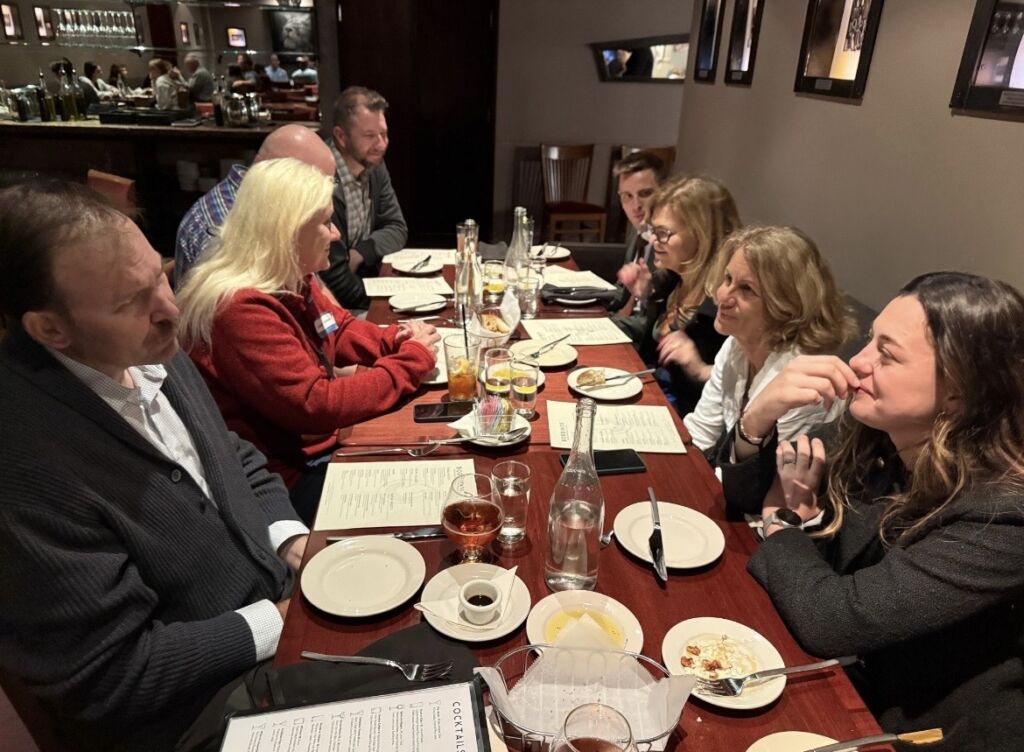
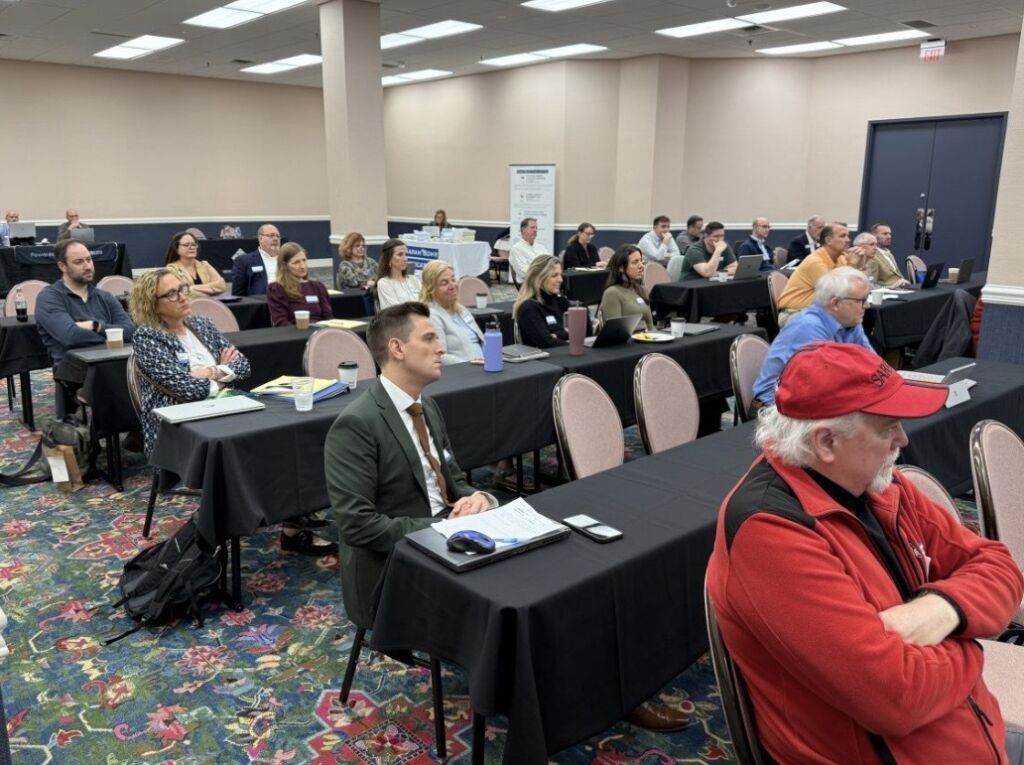
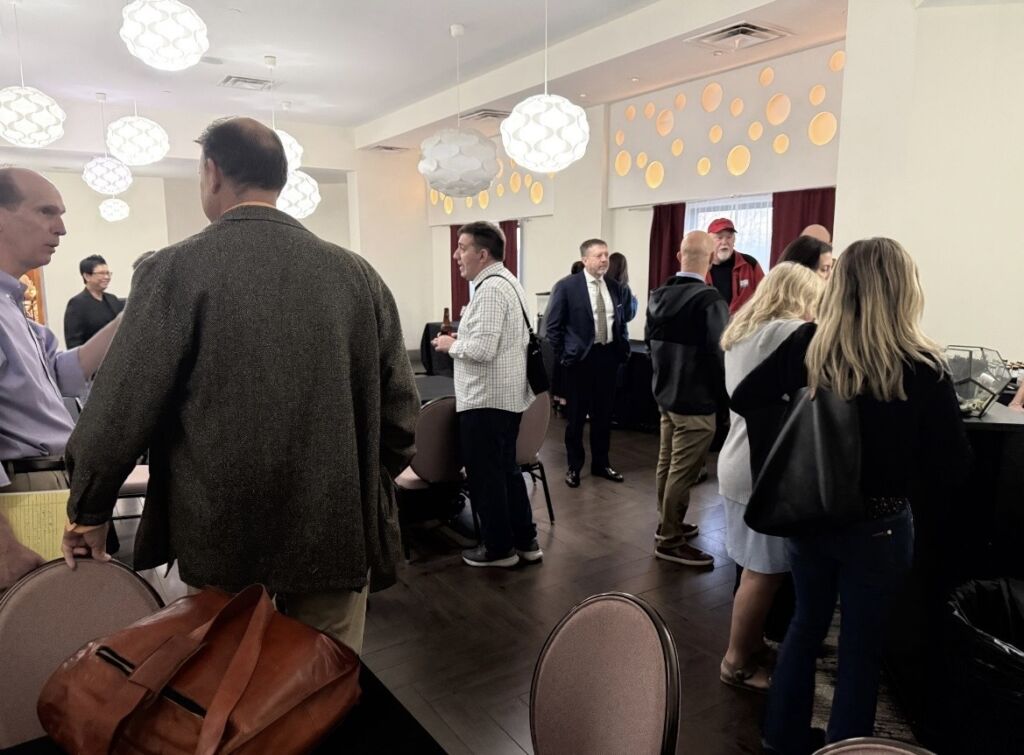
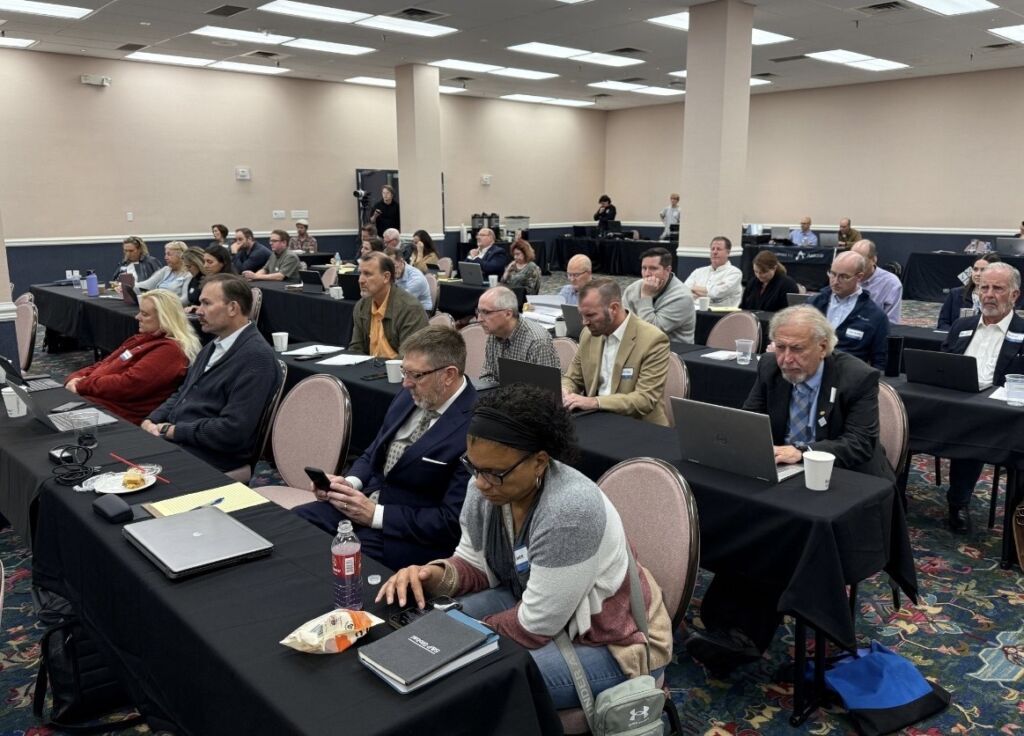
Recent Cases of Interest
Tom Krause, Litigation Director
This month I’m providing a snapshot of several recent District and Circuit court cases of interest. Below I’ve included short summaries of each case, and in the downloadable document at the bottom of the list, you’ll find more detailed explanations.
- De Camacho v. O’Malley, 717 F.Supp.3d 354 (S.D.N.Y. 2024): The district court remanded the denial of disability benefits, finding the ALJ erred in failing to develop the record regarding the claimant’s use of a cane, but that substantial evidence supported the ALJ’s finding that the claimant’s depression was non-severe.
- Sharon J. v. Commissioner of Social Security, 716 F.Supp.3d 59 (W.D.N.Y. 2024): The district court remanded the denial of disability benefits because the ALJ failed to include the claimant’s non-severe mental limitations in the RFC assessment.
- Duran v. O’Malley, — F.Supp.3d — (D. Mass. 2024): The district court reversed and remanded the denial of disability benefits because the Appeals Council failed to consider new and material evidence in the form of a vocational report.
- Harriott v. Commissioner of Social Security, — F.Supp.3d — (S.D.N.Y. 2024): The district court vacated the Appeals Council’s dismissal of the claimant’s appeal and remanded for a determination of timeliness based on an expanded record, finding substantial evidence did not support the Appeals Council’s finding that the claimant did not timely appeal.
- Minarsky v. Kijakazi, — F.Supp.3d — (M.D. Pa. 2024): The district court reversed and remanded the denial of disability benefits, finding the ALJ erred in failing to properly consider the supportability and consistency of multiple medical opinions.
- Wheeler v. Commissioner of Social Security, — Fed.Appx. — 2024 WL 4603298 (11th Cir. Oct. 29, 2024): The Eleventh Circuit reversed and remanded the denial of supplemental security income benefits because the ALJ adopted an RFC assessment that conflicted with a consulting psychologist’s opinions without explanation.
- Jackson v. O’Malley, — F.Supp.3d — (D.S.C. 2024): The district court reversed and remanded the denial of continuing supplemental security income because the ALJ evaluated the claimant’s mental impairments under the current listing criteria rather than the criteria in effect when she was initially found disabled.
- Wilt v. O’Malley, 720 F.Supp.3d 94 (D.N.H. 2024): The district court awarded attorney’s fees following a successful appeal of a denial of disability benefits.
- Charles E. v. Commissioner of Social Security, — F.Supp.3d — (W.D.N.Y. 2024): The district court remanded the denial of disability insurance benefits and supplemental security income for further explanation of bathroom break limitations in the RFC.
- Nerio Mejia v. O’Malley, — F.4th — (9th Cir. Nov. 4, 2024): The Ninth Circuit reversed a district court’s order reducing an EAJA fee award, holding that fees for work on alternative arguments are compensable even if the court did not address them.
- Jeremy H. v. O’Malley, 722 F.Supp.3d 1161 (E.D. Wash. 2024): The district court denied the Commissioner’s motion to dismiss for untimely filing, finding the claimant exhausted administrative remedies and established grounds for equitable tolling.
- Comack v. Commissioner, Social Security Administration, — Fed.Appx. — 2024 WL 4719238 (11th Cir. Nov. 8, 2024): The Eleventh Circuit affirmed the dismissal of a complaint related to pending social security proceedings for failure to serve the Commissioner and failure to exhaust administrative remedies.
Download the full length summaries below.
Preparing for Change with NOSSCR’s PAC Chair
Ann Atkinson, NOSSCR PAC Chair
Many were surprised by the outcome of the election on November 5, but, as we all know, the only poll that counts is the one that happens on Election Day. As they say in the sports world, “that’s why they play the game.”
NOSSCR PAC exists to support members of Congress and candidates whose committee assignments place them in positions to make decisions affecting the interests of our clients and our profession. This means we do not support candidates based on their political party. Instead, we focus on candidates who can further our goals, and that group includes both Democrats and Republicans. Therefore, the fact that an election gives power to one party or the other does not mean that we have lost our ability to influence policy going forward.
Because of this strategy, regardless of the outcome of any one election, we are still in a strong position to educate members of Congress about our issues. However, our continued ability to pursue these goals depends on your continued support of the NOSSCR PAC.
Every donation to the PAC, no matter the size, helps us educate those with the power to influence disability policy. Please support your clients and our practice by going to the PAC website today and making your contribution.
Contributions to the National Organization of Social Security Claimants’ Representatives PAC (NOSSCR PAC) are not tax-deductible as a charitable contribution for federal income tax purposes. Contributions to NOSSCR PAC will be used to support federal and state candidates, political parties, and other political committees. Contributions are strictly voluntary. You may refuse to contribute without reprisal. Any proposed contribution level is merely a suggestion, and you are free to contribute more or less than suggested. You will not benefit or be disadvantaged by reason of the amount of your contribution or a decision not to contribute. Federal law requires NOSSCR PAC to use its best efforts to collect and report the name, mailing address, occupation and employer of persons whose contributions exceed $200 in a calendar year. You must be a U.S. citizen or lawfully admitted for permanent residence in the U.S. to contribute.
This is a guest column. The views expressed in this column are the views of the author alone, and do not represent the views of NOSSCR, NOSSCR’s leadership, or NOSSCR’s staff.
NOSSCR’s Mentorship Program Now OPEN!
Ready to connect and grow? The application window for NOSSCR’s Mentorship Program is now OPEN! Whether you’re seeking guidance or eager to share your expertise, this is your chance to make a difference.
Why Apply?
- Personalized Professional Guidance: Each mentor and mentee will connect via monthly video or teleconference sessions, offering personalized support on practice areas, career development, and work/life balance.
- Expand Your Network: The program provides participants the chance to build meaningful connections within the NOSSCR community, enriching both professional and personal growth.
- Annual Recognition: All participants in the mentorship program will be recognized annually for their contributions and commitment to the NOSSCR community.
Additional Details: The program has a limited number of spots, and all participants must sign a confidentiality and conflict of interest agreement to foster a safe and supportive environment for learning and guidance. We encourage all eligible members interested in offering mentorship or seeking guidance to apply. This is a fantastic opportunity to grow within our professional community through shared experiences and support.

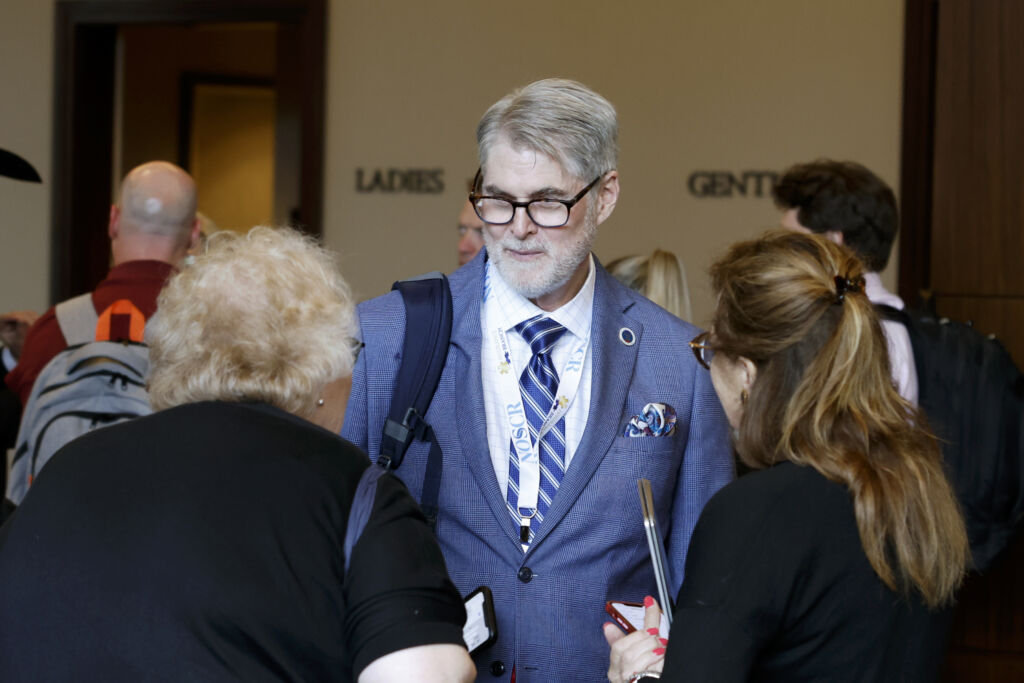



Spotlight on Raper v. O’Malley
Tom Krause, NOSSCR Litigation Director
The Supreme Court has been asked to resolve a critical circuit split regarding the appropriate remedy for Appointments Clause violations in disability cases. The petition for writ of certiorari in Raper v. Commissioner of Social Security, 89 F.4th 1261 (11th Cir. 2024), filed on August 22, 2024, challenges the Eleventh Circuit’s decision to allow the same Administrative Law Judge (ALJ)—originally unconstitutionally appointed—to rehear a case after receiving a proper constitutional appointment.
This case poses a pivotal question: Is a remand to a different ALJ required when a decision by an unconstitutionally appointed ALJ is vacated and remanded, even if the ALJ later receives a valid appointment?
The Case at Hand
Marcus Raper, the petitioner, initially had his Social Security disability claim denied in 2017 by ALJ Kevin J. Detherage, who lacked a constitutionally valid appointment at the time. Following the Supreme Court’s decision in Lucia v. SEC, 585 U.S. 237 (2018), which established that unconstitutionally appointed officials must be replaced upon remand, the SSA ratified ALJ Detherage’s appointment in 2018. Nonetheless, when Raper’s case was remanded on the merits in 2019, it returned to the same ALJ, who again denied the claim.
The Eleventh Circuit upheld this second denial, reasoning that vacating the initial decision on the merits removed any taint from the prior unconstitutional appointment. This reasoning directly conflicts with rulings from the Fourth and Ninth Circuits.
A Circuit Split Emerges
The Supreme Court is more likely to grant a petition for certiorari where there is a split in the Circuits, as there is here. The Eleventh Circuit’s decision expressly departs from those of the Fourth and Ninth Circuits:
Fourth Circuit: In Brooks v. Kijakazi, 60 F.4th 735 (4th Cir. 2023), the court held that the taint of an unconstitutional appointment persists, and reassignment to a different ALJ is required to ensure a fair hearing.
Ninth Circuit: Similarly, in Cody v. Kijakazi, 48 F.4th 956 (9th Cir. 2022), the court mandated reassignment to a new ALJ, emphasizing that the structural protections of the Appointments Clause demand remedies with “bite.”
The Eleventh Circuit, in contrast, determined that if the initial decision is vacated for merits-related reasons, the original ALJ—now constitutionally appointed—can preside over the rehearing.
Implications for Appointments Clause Remedies
This case raises significant questions about the balance between procedural fairness and administrative efficiency. The petitioner argues that the Eleventh Circuit’s decision undermines the structural protections of the Appointments Clause and conflicts with the Supreme Court’s directive in Lucia. Further, inconsistent approaches among the circuits could lead to unequal treatment of Social Security claimants nationwide.
Why This Case Matters
The decision in Raper could have far-reaching implications for Social Security claimants. The Supreme Court will decide whether to grant the cert petition in the next month or two. The Court’s decision to grant or deny certiorari will signal the Court’s willingness to address unresolved questions about the scope of remedies for constitutional violations in administrative adjudications. Stay tuned for updates as the Court considers whether to take up this critical issue.
Attorneys
The petitioner in Raper is represented by NOSSCR Sustaining Members Richard A. (Rick) Culbertson and Sarah Jacobs from Culbertson, Jacobs & Laboda, PLLC, and by Eric Shumsky, Thomas M. Bondy, Kamilyn Y. Choi, and Samantha M. Leff from Orrick, Herrington & Sutcliffe, LLP.
Former NOSSCR Sustaining Member Eitan K. Yanich, Law Office of Eitan Kassel Yanich PLLC represented the plaintiff in Cody.
NOSSCR Sustaining Member David F. Chermol, Chermol & Fishman, LLC, represented the plaintiff in Brooks.
Ann’s Useful Chart (Updated for 2025) – SGA/TWP/SSI
NOSSCR Board Member Ann Atkinson has graciously shared her handy downloadable chart for quick access to the SGA/TWP/SSI numbers for each year – now updated for 2025! Our thanks to Ann for sharing this useful tool.
PAC Contributor List
THANK YOU TO OUR NOSSCR PAC CONTRIBUTORS
As of November 2024
| First Circuit Ronald Belluso (CC) Mariam Lavoie (CC) Riley Fenner (CC) David Ferrari (C) Susan Smith Webb (CC) Second Circuit Peter Antonowicz (CC) Peter Gorton (CC) Maurice Maitland (CC) Sharmine Persaud (CC) Katrina Tomer (CC) Third Circuit Kate Albert (CC) Marianne Brown (CC) Michael Brown (CC) Maryjean Ellis (CC) Gregg Hobbie (CC) Alicia Hutchiinson (CC) Adrienne Jarvis (CC) Jess Levanthal (CC) Kevin Liebkemann (CC) Sheryl Mazur (CC) Timothy Mello (CC) Judson Perry (CC) Robert Petruzzelli (DC) Alan Polonsky (PC) Fourth Circuit Russell Bowling (CC) Leah Broker (CC) Christine Burnside (CC) Timothy Clardy (CC) Vaughn Clauson (CC) Linda Cosme (CC) Geraldine Delambo (CC) Rick Fleming (DC) Eric Goodale (DC) Todd Johnson (CC) Martin Keane (CC) Christine Latona (C) Nowell Lesser (CC) Liz Lunn (CC) Nicholas Parr (CC) George Piemonte (CAP) Ashley Hartman Sappenfield (CC) Joanna Suyes (CC) Stacy Thompson (DC) Laura Beth Waller (DC) Robertson Wendt (DC) |
| Fifth Circuit Paul Burkhalter (CC) Angela Davis Morris (CC) Thomas Fischer (CC) John Heard (CAP) Jonathan Heeps (CC) Michel Hengst (CC) Ronald Honig (CC) Jacob Hugentobler (CC) Gerard Lynch (CC) Patrick O’Neal (CC) David Pogue (CC) Alex Rankin (CC) David Lance White (C) Sixth Circuit Mark Aiello (CC) Mary (Beth) Bates (CC) Clifford Farrell (DC) Jennifer Harris (CC) Robert MacDonald (CC) John Nicholson (CC) Debra Shifrin (PC) Donna Simpson (CC) James Roy Williams (CC) Seventh Circuit Marin Carrow (CC) Eric Farr (C) Richard Feingold (CC) Justin Kosiba (CC) Randall Manus (CC) Meredith Marcus (C) Cody Marvin (DC) Katherine Miller (CC) Jeremy Pollen (C) Avram Sacks (CC) James Schiff (C) Thomas Scully (CC) Stephen Sloan (CC) Thomas Thompson (CC) Audrey VanGilder (CC) Eighth Circuit Karen Bill (CC) Jeffrey Bunton (CC) Julie Burkett (CC) David Camp (CAP) Patrick Cavanaugh (DC) Timothy Cuddigan (DC) Terrell Dempsey (CC) Vicki Dempsey (CC) Meghan Gallo (CC) Thomas Krause (PC) Theodore Norwood (DC) J. Asha Sharma (CC) Geramya Smith (C) Frederick Spencer (CAP) Tim Tripp (CC) Frank Williams (CC) |
CAP=Capitol Club, $5,000/monthly contribution of $416
PC=Platinum Club, $2,500-$4,999/ monthly contribution of $208-415
DC=Diamond Club, $1,000-$2,499/monthly contribution of $83-207
CC=Century Club, $100-$999
C=Contributor, all other contributions
| Ninth Circuit Sima Aghai (CC) Mark Bunch (CC) Maren Bam (DC) Mark Caldwell (CC) Paul Clark (CC) Brian Clymer (CC) Mary Fowler (CC) Marc Kalagian (DC) Alise Kellman (DC) Kevin Kerr (DC) Mark Manning (CC) Meghan McNamara Miller (CC) Eric Penar (CC) Maggie Schott (CC) Eric Slepian (CC) David Shore (CC) Timothy Walker-Dupler (CC) Steve Weiss (CC) Jennifer Zorilla (CC) Tenth Circuit Ann Atkinson (DC) Jay Barnes (CC) Steven Earl (CC) Thomas Feldman (CC) John Harlan (DC) Gary Jones (CC) Erin Stackenwalt (CC) Steve Troutman (CC) Gayle Troutman (CC) William Viner (CC) Eleventh Circuit Pamela Atkins (CC) Carol Avard-Hicks (CC) Richard Culbertson (CC) Shelley Davidson (CC) Heather Freeman (DC) Kevin Hall (CC) Marylin Hamilton (C) Kathleen Flynn (CC) Doug Mahoney (CC) Deborah Mitchell (CC) Krysti Monaco (CC) Ellen Moyle (C) Marjorie Schmoyer (DC) Sarah White Park (CC) David Wright (DC) |
Contributions to the National Organization of Social Security Claimants’ Representatives PAC (NOSSCR PAC) are not tax-deductible as a charitable contribution for federal income tax purposes. Contributions to NOSSCR PAC will be used to support federal and state candidates, political parties, and other political committees. Contributions are strictly voluntary. You may refuse to contribute without reprisal. Any proposed contribution level is merely a suggestion, and you are free to contribute more or less than suggested. You will not benefit or be disadvantaged by reason of the amount of your contribution or a decision not to contribute. Federal law requires NOSSCR PAC to use its best efforts to collect and report the name, mailing address, occupation and employer of persons whose contributions exceed $200 in a calendar year. You must be a U.S. citizen or lawfully admitted for permanent residence in the U.S. to contribute.
Save the Date! NOSSCR to Host Supreme Court Admission Ceremony for Members
We are pleased to announce that NOSSCR is organizing a group admission to the United States Supreme Court Bar on June 18, 2025.
This ceremony is an opportunity for NOSSCR members to be formally admitted to practice before the highest court in the land alongside their colleagues. Please note that admission is limited to 50 NOSSCR members.
We will publish the application with our unique QR code soon. After that, we will begin accepting applications. Please monitor your email and the NOSSCR website for announcements and additional information.
NOSSCR Comments on SSA’s Latest Information Collection Activities
When the Social Security Administration intends to collect certain information or data from groups or individuals via routine submissions or forms, those collection activities must first be approved by the Office of Management and Budget (OMB) in compliance with Public Law 104-13, the Paperwork Reduction Act of 1995, effective October 1, 1995. Typically, these collection activities are published in the Federal Register with the opportunity for the general public to submit comments. Any comments submitted are considered by the agencies before the proposed changes are finalized.
The agency’s latest information collection package, which can be read in full here, sought comment on several changes including a proposed New Applicant Survey and changes to the Statutory Benefit Continuation Election Statement and Disability Report-Appeal forms. NOSSCR submitted comments and those comments can be read in full below.
Updated POMS Language for the Rules of Conduct and Standards of Responsibility for Representatives
Last month, SSA quietly made some changes to POMS GN 03970.010, Rules of Conduct and Standards of Responsibility for Representatives.
While our duties remain the same, they did add some clarifying language regarding disclosures in Section 5:
5. Disclose required information about submitted medical or vocational opinions.
This affirmative duty requires a representative to disclose the following information to us in writing at the time they submit a medical or vocational opinion to us or as soon as the representative is aware of the submission that:
- The representative’s employee or any individual contracting with the representative drafted, prepared, or issued the medical or vocational opinion; or
- The representative referred or suggested that the claimant seek an examination from, treatment by, or the assistance of, the individual providing the opinion evidence.
NOTE 1: The agency must report to the Office of Management and Budget (OMB) the number of disclosures received pursuant to 20 CFR 404.1740(b)(5)-(9) and 416.1540(b)(5)-(9) and outlined here in GN 03970.010B.5-9. To assist with disclosure reporting requirements, staff at all levels of case adjudication should ensure that any disclosures described in this subsection (GN 03970.010B.5) are filed into the electronic claim(s) file (EDCS/eView) using the document type “Required Disclosure – Medical (3076)” or “Required Disclosure – Vocational (1088),” depending on the type of evidence submitted with the disclosure, using appropriate processing procedures.
NOTE 2: A representative must submit a separate disclosure each time they submit opinion evidence that meets the requirements in 20 CFR 404.1740(b)(5) and 416.1540(b)(5) and described in this subsection. A single disclosure for multiple opinions that meet those requirements is not sufficient.
NOTE 3: “Contracting” means entering into an agreement with the representative to assist with representation or provide evidence or information pertinent to the claim.
Please ensure that your internal operating procedures include providing the proper disclosures when submitting medical and vocational opinion evidence.
NOSSCR’s Acronym List
We have collected several commonly used (and some uncommonly used) SSA-related acronyms and their meanings for your convenience. Feel free to download the PDF below. If you come across acronyms that are not on this list that you think should be, please let us know at nosscr@nosscr.org.
Daily Dose of Data from SSA
Monthly SSDI Processing Times for FY2019 – 09-30-24
Total State DDS Employees by State FY2010 to FY2023
Veteran Beneficiaries, 2024 – SSA’s Office of Retirement and Disability Policy Population Profile
Monthly Statistical Snapshot, October 2024 – A monthly snapshot of statistics on Social Security beneficiaries and Supplemental Security Income recipients
SSI Monthly Statistics, October 2024 – These monthly tables provide statistics for federally administered payments and awards under the Supplemental Security Income (SSI) program
November 8, 2024 Memorandum – Estimated Change in Federal SSI Program Cost for Expanding SSI Eligibility to Residents of Puerto Rico, and Estimated Change in OASDI Program Cost for Eliminating the Application of WEP and GPO Provisions for OASDI Beneficiaries Receiving a Pension Based on Work in Puerto Rico That Was Not Covered Under the OASDI Program, requested by William Villafañe Ramos
Who Wants to Live to 100? – The Future of Mortality – Chief Actuary Steve Goss’ presentation slides from the 2024 ImpACT Society of Actuaries Annual Conference
Useful Resources
OHO Caseload Analysis Report, October 2024
State Medical Records Payment Rates
Social Security Rulings and Acquiescence Rulings by Year
HALLEX Contents & Recent Changes

